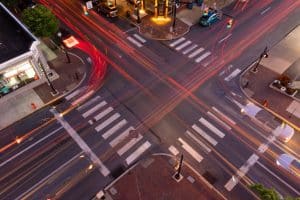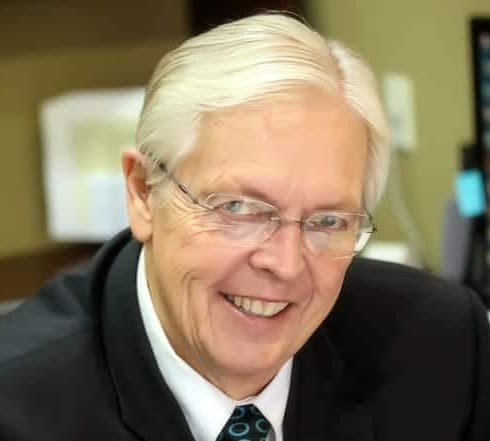Intersections Are Among Most Dangerous Places for Drivers
 Intersections are points where two or more roadways or paths cross each other or come together. They are necessary and unavoidable for drivers, as well as for pedestrians and bicyclists. They are also (potentially) incredibly dangerous for all who pass through them.
Intersections are points where two or more roadways or paths cross each other or come together. They are necessary and unavoidable for drivers, as well as for pedestrians and bicyclists. They are also (potentially) incredibly dangerous for all who pass through them.
According to the United States Department of Transportation Federal Highway Administration (FHWA), intersections create circumstances favorable for car accidents. In fact, the FHWA reports that “each year, roughly one-quarter of traffic fatalities and about one-half of all traffic injuries in the United States are attributed to intersections.”
Why do so many car accidents happen at intersections?
There are several reasons why the FHWA reports that “more than 50% of the combined total of fatal and injury crashes occur at or near intersections.” Driver error is typically to blame, with drivers speeding through yellow signals, failing to stop at red lights, not yielding to other drivers, and making illegal turns.
According to the FHWA, there are two types of intersections: unsignalized and signalized, and the accidents that occur at each type of intersection can be deadly.
Unsignalized intersections: The majority of intersections in the United States are unsignalized. This simply means that these intersections do not have a traffic signal, or traffic light, to direct traffic. Instead, these intersections may be:
- Controlled by a stop sign: At this type of intersection, at least one approach has a stop sign, requiring drivers using that approach to come to a full stop before entering the intersection.
- Controlled by a yield sign: Similar to a stop-sign controlled intersection, this type of intersection relies on a yield sign to direct drivers at one or more approaches.
- Uncontrolled: An uncontrolled intersection has no signage or traffic signal to direct drivers at any approach to the intersection. Uncontrolled intersections are most often found in rural or residential areas where there is a lower volume of traffic.
Nationwide, of the more than 10,000 fatalities that occurred in accidents involving intersections in 2020, over 7,000 of those fatalities involved an unsignalized intersection, according to the FHWA.
Signalized intersections: These are intersections that are controlled with a traffic signal. Depending on the size and location of the intersection; the number of approaches; and the volume of cars, bicyclists, and pedestrians that typically use the intersection; the traffic light may include left-turn signals or other features to reduce confusion and increase safety.
Per statistics compiled by the FHWA, signalized intersections represent “about one-third of all intersection fatalities, including a large proportion that involve red-light running.” In 2020, there were more than 38,000 fatalities in accidents in the United States. Of those fatalities, 10,626 occurred at intersections, with more than 3,500 involving a signalized intersection.
Common injuries in car accidents at intersections
Regardless of the reason for the accident, car accidents at intersections can be deadly. Even those accidents that are not fatal can still cause serious or catastrophic injuries. Common car accident injuries include:
- Broken or fractured bones
- Burns
- Internal bleeding
- Lacerations
- Organ damage
- Soft tissue damage, including sprains and damage to tendons
- Spinal cord injuries (SCI)
- Traumatic amputations
- Traumatic brain injury (TBI)
- Whiplash
In addition to physical injuries, car accidents can also cause mental and emotional trauma that may last long after the physical injuries have healed. People involved in car crashes may be left with lingering feelings of panic, anxiety, and high levels of stress. An accident may even cause post-traumatic stress disorder (PTSD).
Car accidents at Fargo intersections
While most people feel safer driving on local roads rather than on highways, the FHWA’s statistics about intersections show that is a false sense of safety. In fact, a study by the North Dakota Department of Transportation (NDDOT) identified the most dangerous intersection in the state as being located in Fargo. According to a January 2022 report on Valley News Live, the study revealed that the intersection at 13th Ave S and 45th St in Fargo topped the list after being the site of 76 crashes between January 2018 and 2020.
Fargo also claimed the number six spot on the list, thanks to the intersection of 45th St and 23rd Ave S. That location saw 47 car accidents in the three years examined by the study. Two of those crashes caused incapacitating injuries.
How a Fargo car accident attorney can help
If you or a loved one has been involved in a car or truck accident at an intersection in Fargo or the surrounding area, you should speak with our experienced Fargo car accident attorney as soon as possible. Even if your injuries seem minor, they may cause long-term medical issues or financial loss. It is important that you have knowledgeable legal counsel fighting on your behalf to help ensure you receive the compensation you deserve. It is especially important to seek legal counsel after an accident here in North Dakota. Here’s why.
As a modified comparative negligence state, North Dakota law allows drivers involved in accidents to claim damages as long as they were less than 50% at fault. After an accident, particularly an accident in which people suffered injuries or if there was loss of life, insurance companies look to prove that the party they represent was below that 50% benchmark for fault. Having a personal injury lawyer on your side who understands not only North Dakota personal injury law – but how to investigate an accident, including reconstructing the accident; how to build a strong case; and how insurance companies and their attorneys operate – is imperative. Even if your or your loved one’s injuries are catastrophic, you must prove that the other party or parties involved are more than 50% at fault for the accident.
From our offices in Fargo, Bismarck, and Minot, the skilled personal injury attorneys at Larson Law have extensive experience fighting on behalf of accident victims throughout North Dakota. Give us a call or complete our contact form today to schedule a free consultation. We handle accident cases on a contingency fee basis.

Mark Larson is a Certified Civil Trial Specialist and Certified Civil Pre-Trial Specialist focusing on personal injury, car accidents, wrongful death, and oil field claims. Since 1979, Larson Law has served the injured throughout North Dakota. Read more about Mark V. Larson.
